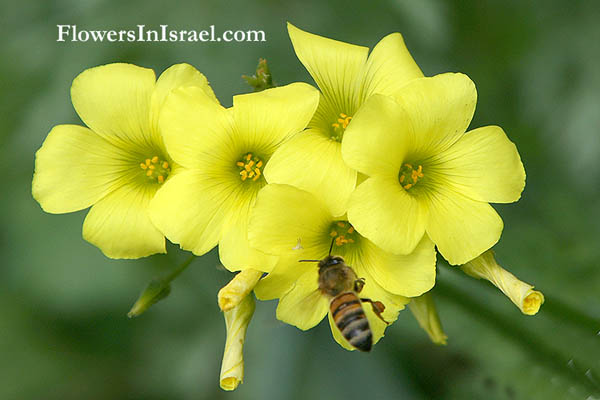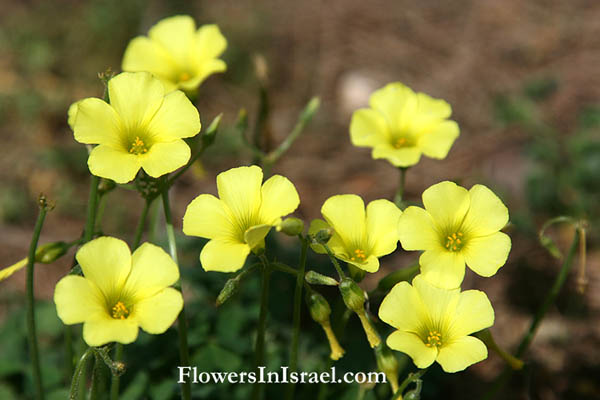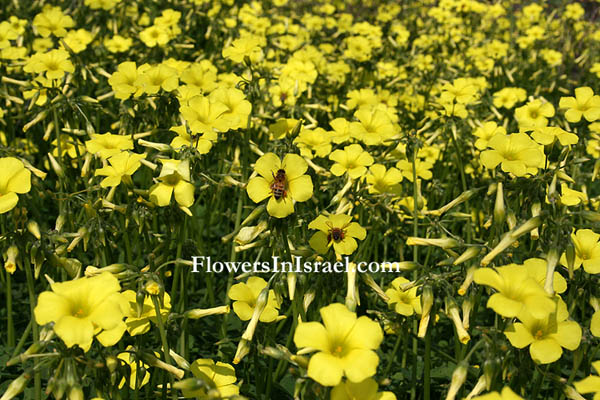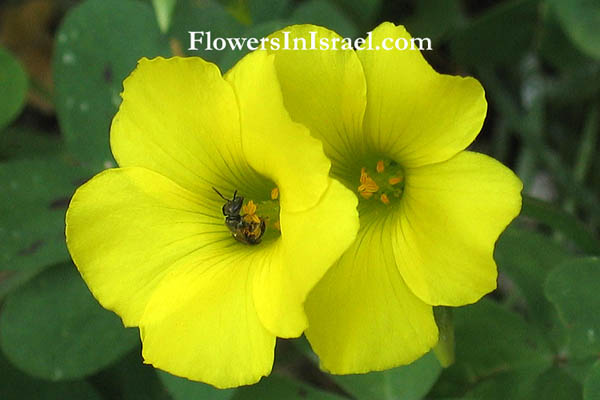Nodding Wood-sorrel,
Hebrew: חמציץ נטוי, Arabic: حمصيص
| Scientific name: | Oxalis pes-caprae L. | |
| Synonym name: | Oxalis cernua Thunb. | |
| Common name: | Nodding Wood-sorrel | |
| Hebrew name: | חמציץ נטוי | |
| Arabic name: | حمصيص | |
| Plant Family: | Oxalidaceae, חמציציים |

|
| Life form: | Geophyte | |
| Stems: | Sparsely pubescent | |
| Leaves: | Alternate, rosette, compound, trifoliate | |
| Inflorescence: | Umbellate cymes | |
| Flowers: | Infundibuliform (shaped like a funnel); yellow petals 20-25 mm | |
| Fruits / pods: | Capsule | |
| Flowering Period: | January, February, March, December | |
| Habitat: | Disturbed habitats | |
| Distribution: | Mediterranean Woodlands and Shrublands | |
| Chorotype: | Plurireginalbor-trop | |
| Summer shedding: | Ephemeral |

Derivation of the botanical name: Oxalis, Greek oxys, acid, sour, sharp; referring to the taste of the leaves and the stem; Pliny used Latin oxalis, idis, for some species of Rumex. pescaprae, pes, foot; capra, goat; foot of the goat, alluding to the shape of the leaflet. The Hebrew name: חמציץ, hamzitz, coined from חמץ (with reduplication of the צ) on the analogy of the name Oxalis, which derives from Latin oxalis (= a sort of sorrel).


|